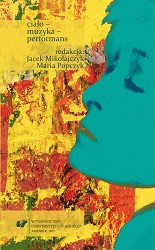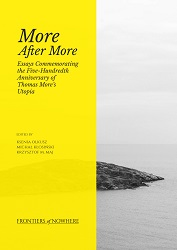
Performatywność i jej funkcje w wybranych modelach performatywnych w muzyce
According to some researchers performative models that are a basis for realization or are formed in course of artistic practices in a field of music are a kind of response to an excessive concentration of theoretical discourse on musical piece that is identified with a formalized music transcription. This article contains a critical examination of the narrative model connected to the so called absolute music. Through analysing two modern music compositions there will be introduced two further models: “participatory” and ”of the perceptive turn” that are a respond to the processes of experimenting with sound’s audibility transgression and that require the reorganization of perception process into non-audial (amyryngal) perception. Another subject that would also be considered is a role of somatic dimension at the whole process and an aesthetic consequences arising from aforementioned models. There will be furnished a role of performativity in aforementioned models and their aesthetic consequences.
More...
